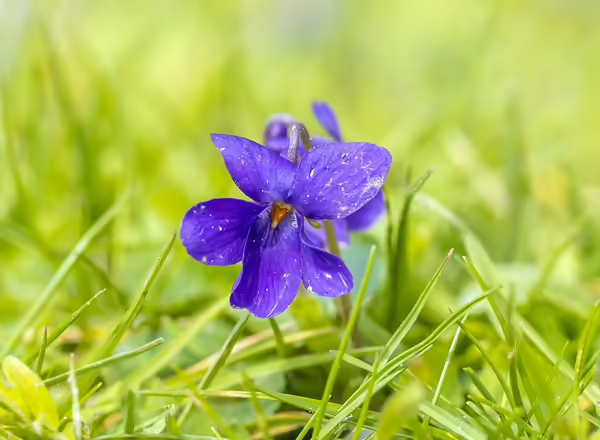
Managing Violets
Managing Violets in Lawns
Violets (Viola species) include several cool-season annuals and perennials that are low-growing plants. These species are very shade tolerant and prefer lawns located on moist, fertile soils. Violets tend to be most visible during cool weather of spring and fall. Leaves of the common violet are oval to kidney-shaped with a heart-shaped base. Flowers may be white, blue, purple, or yellow. All violets reproduce by seed, and perennial violets also spread by creeping roots and rhizomes. The fleshy rhizomes full of stored energy combined with a thicker waxy cuticle on the leaf surface make this plant difficult to control.
To keep violets from invading lawns, maintain a thick lawn by using proper lawn care practices. (Mow high, mow often, and keep your blades sharp just to name a few.)

Unfortunately, grasses in shade areas are not as competitive against weeds as those in full sun. For some, the violets function quite well as a groundcover and can be desirable in some woodland areas. In fact, Viola sororia (Common blue violet) is the Illinois State Wildflower. Read more about Embracing the Common Blue Violet.
One control option is to dig out existing violets. Pull up all the roots and stems or the plant will grow back. This option works well if ground ivy has gotten a foothold in a flower or shrub bed, and you can prevent the spread into the lawn. If you are starting a lawn using organics, it is important to rid the lawn area of violets before you establish the lawn.
Although control is difficult, existing violets can be treated with postemergence broadleaf herbicides containing the active ingredient triclopyr. Additional active ingredients such as dicamba, 2,4-D, and MCPP can also be used, however, triclopyr has shown to be the most effective. Applications of the herbicide are recommended from mid-spring to early summer and/or mid to late fall. Regardless of the time, make sure the weeds are actively growing.